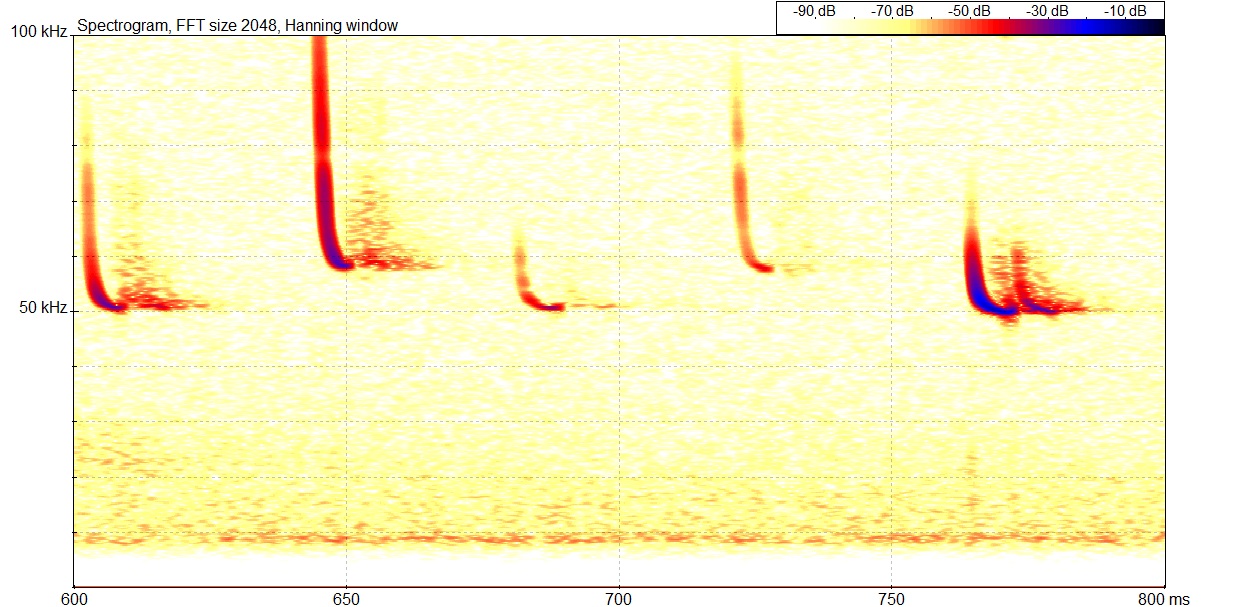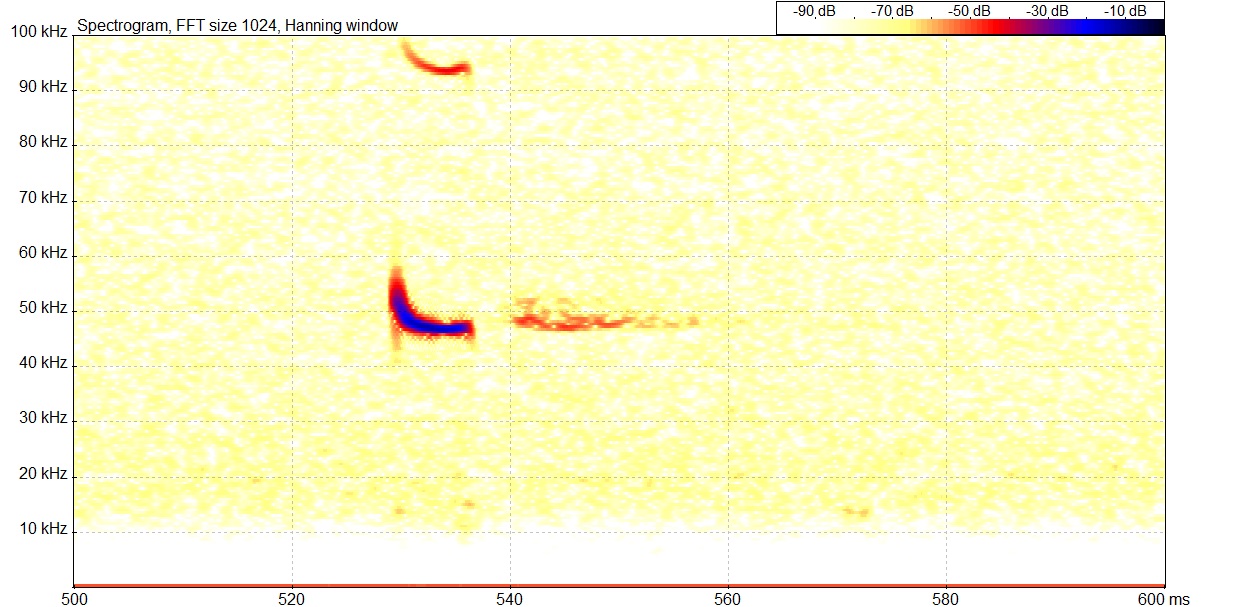Pipistrellus pygmaeus Ppyg
Emax usually between 50 and 60 kHz, but can be lower or higher. The low ones can easily be confused with Common pipistrelles. There are disagreements among experts where to draw the limit line. Further down on this page there is a questionable recording.
This first example shows how two Soprano pipistrelles are hunting and singing. They differ a lot in Emax; one at about 58 kHz and the other at 50-51 kHz. This is often seen where many bats are hunting together.

PpygM00383, 130824 20:50:59, Hovdala, Hammarmölledammen, SWEREF99: N: 6217522 E: 419694 Google Earth
Another singing male.
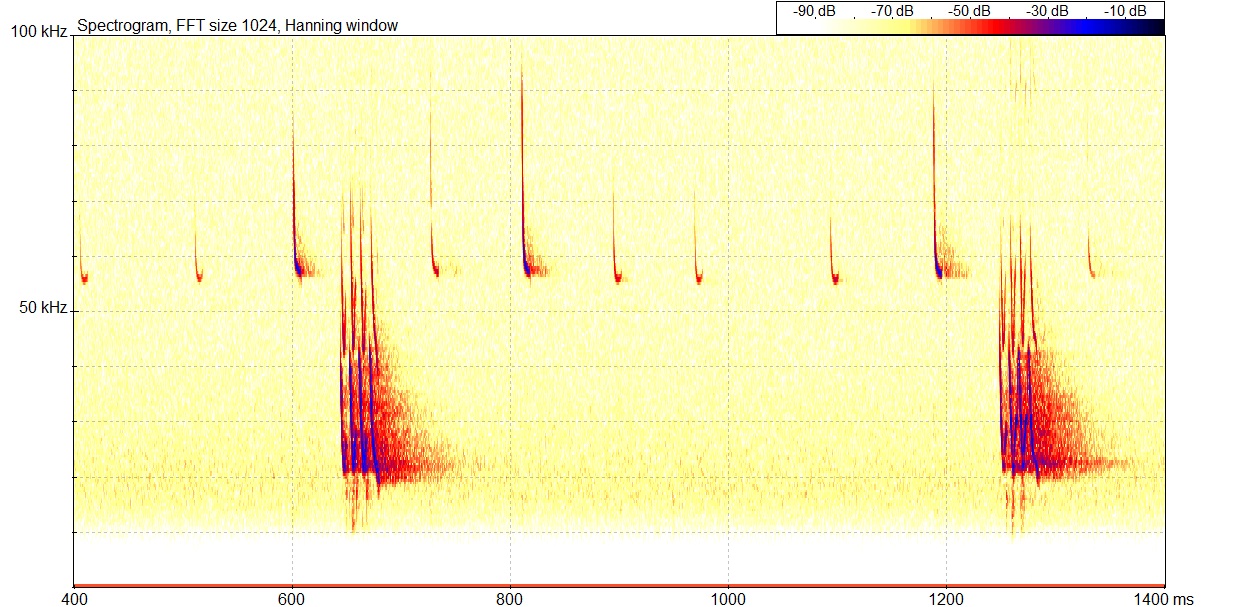
PpygM00158, 130824 20:50:59, Hovdala, Hammarmölledammen, SWEREF99: N: 6217522 E: 419694 Google Earth
Hunting Soprano pipistrelle with feeding buzz:
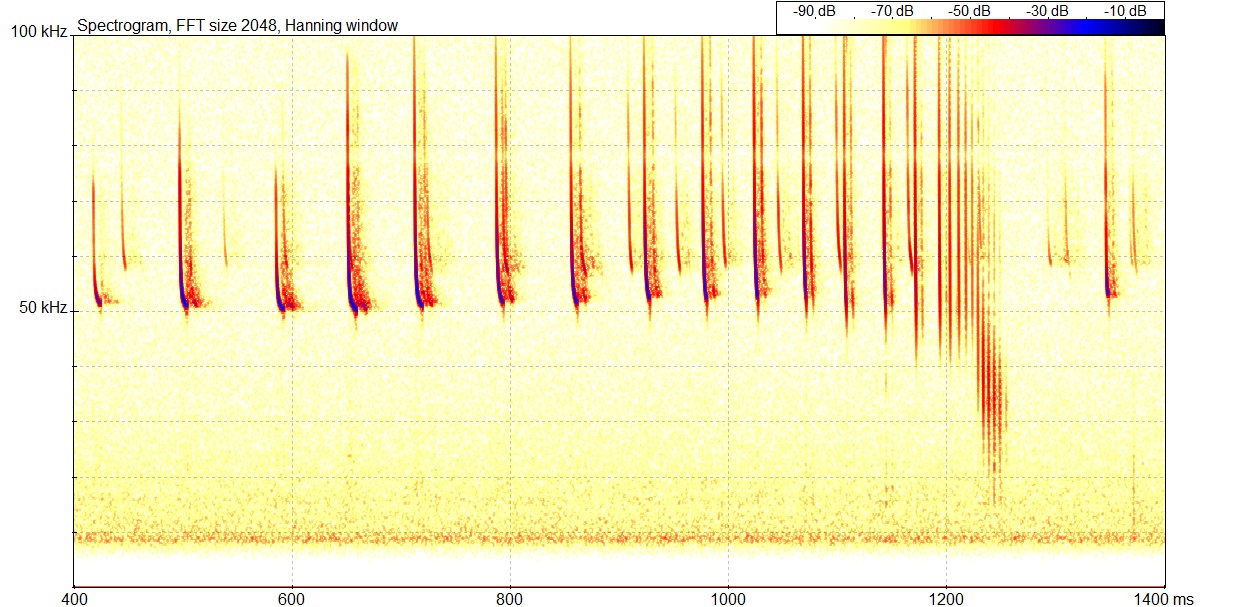
PpygM00311, 130824 20:43:35, Hovdala, Hammarmölledammen, SWEREF99: N: 6217522 E: 419694 Google Earth
An illustration of how the hunting calls are transformed into different phases of feeding buzz. The intervals get shorter, the pitch higher and the shape is more straight. At the end, just before catching, the intervals are around 6 ms.
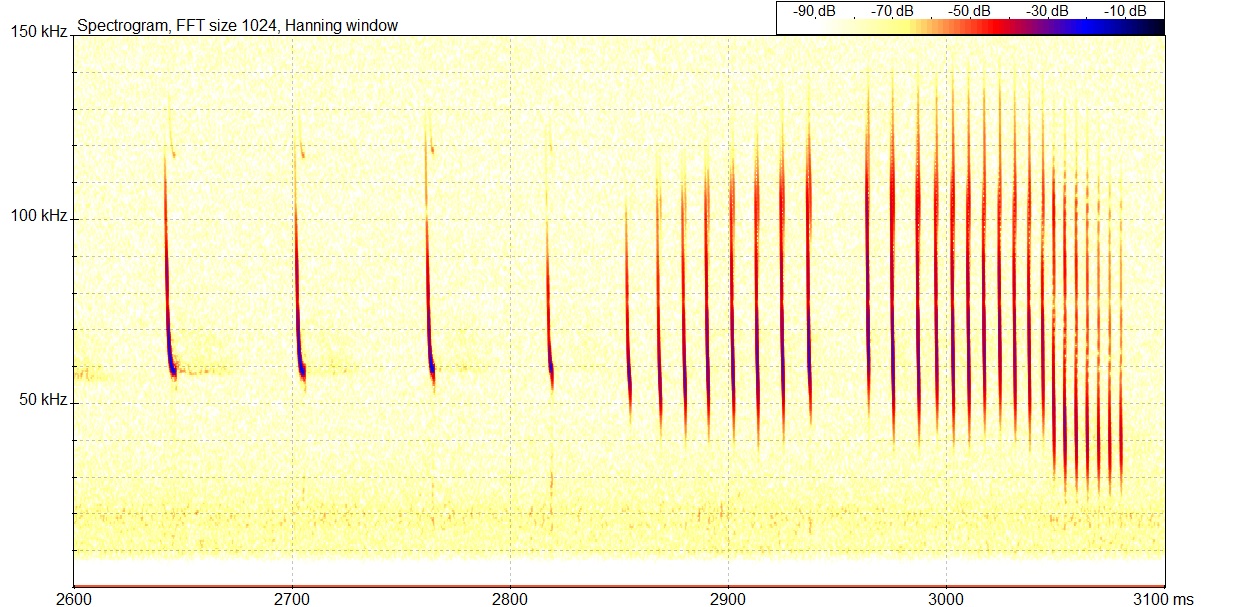
PpygM00078, 150619 03:19:15, Lillehem, SWEREF99: N:6181827 E:442816 Google Earth
Here is a Pipistrelle with Emax 48-49 kHz. The circumstances around this recording indicate that it is a Soprano pipistrelle. Some experts disagree but there is a detailed motivation further down.
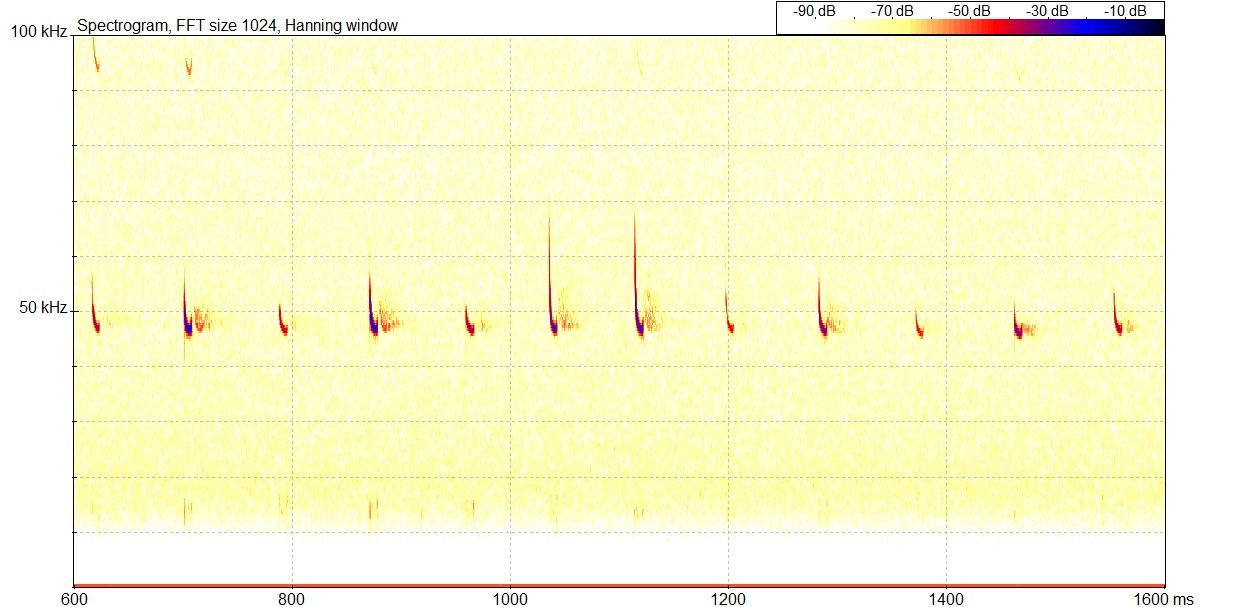
JEM00146, 140629 22:39:50, Recorded by Johan Eklöf
Tha calls are fairly long (6-7 ms) and the intervals are around 90 ms, i.e. one call per wing beat. This means that the bat i flying relatively free from clutter (> 1m). There is also a distance between the call and the echo cloud which inicates the same. When bats are flying free in this way, they lower the pitch. In this case 48-49 kHz.
This is low to be a Soprano, but not low enough to be a Common pipistrelle. A Common pipistrelle flying in the open, is always below 45 kHz.
